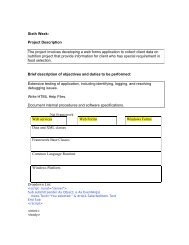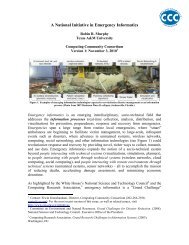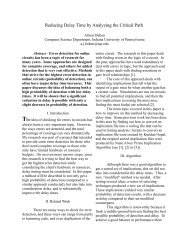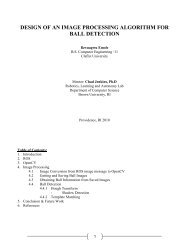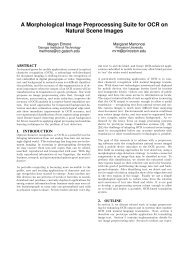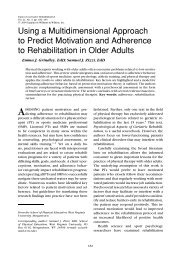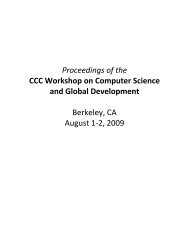High Performance Microchip Supply - Under Secretary of Defense ...
High Performance Microchip Supply - Under Secretary of Defense ...
High Performance Microchip Supply - Under Secretary of Defense ...
You also want an ePaper? Increase the reach of your titles
YUMPU automatically turns print PDFs into web optimized ePapers that Google loves.
RECOMMENDATIONS ____________________________________________________________<br />
elsewhere (recommendation 2). The department should estimate the<br />
number and varieties <strong>of</strong> microelectronic components that require<br />
trustworthiness as an aid to planning the size and scope <strong>of</strong> the<br />
<strong>Defense</strong> Trusted Integrated Circuits Strategy 35 (recommendation 3).<br />
Access to the necessary design and manufacturing capability requires<br />
that DOD purchase products and services from leading-edge<br />
semiconductor firms in a way acceptable to the government, its<br />
systems contractors, and to the component suppliers. DOD needs a<br />
focused, tailored acquisition plan, driven by a long-term vision <strong>of</strong> its<br />
semiconductor needs, to establish the basis, policy, and operating<br />
guidelines for DOD-enabled access to trusted foundry services by the<br />
department, its contractors, and others. (For instance, the status <strong>of</strong><br />
foundry-supplied components as government-furnished equipment<br />
must be clarified as well as payment policies. [recommendation 4]).<br />
Cost and manufacturing technology trends are making design and<br />
fabrication <strong>of</strong> limited-volume ASICs prohibitively expensive. New<br />
low-volume chip manufacturing models and fabrication equipment<br />
are required if future defense systems are to have unique<br />
microelectronics hardware capabilities at a reasonable cost. The same<br />
requirement for economical, modest-volume ICs is developing for<br />
future commercial products. A reexamination <strong>of</strong> economic models<br />
for producing low-volume products will require a joint government -<br />
industry program to develop new, more flexible factory technology<br />
capable <strong>of</strong> meeting both defense and commercial needs<br />
(recommendation 5). The United States and its allies still maintain<br />
regimes <strong>of</strong> export controls for defense-critical and dual-use<br />
technology and equipment as one approach for limiting some<br />
technology transfers to potential adversaries (recommendation 6).<br />
Recommendations follow addressing specific technologies unique to<br />
use <strong>of</strong> programmable “standard” components (such as PLAs, MPUs<br />
and DSPs), defense applications and assurance <strong>of</strong> component<br />
trustworthiness (including design techniques), DOD-unique<br />
technologies, and countertamper pr<strong>of</strong>iciency (recommendations 7, 8,<br />
and 9).<br />
35. Memo from the Deputy <strong>Secretary</strong> <strong>of</strong> <strong>Defense</strong>, “<strong>Defense</strong> Trusted Integrated Circuits<br />
Strategy”, dated October 10, 2003, Ref. U16619/03 - see Appendix C.<br />
56 _________________________________________________________ DSB TASK FORCE ON



